Route of the Czars
A trip from October 11 through October 20, 2006
| Moscow Canal, the Volga and the Neva |
|
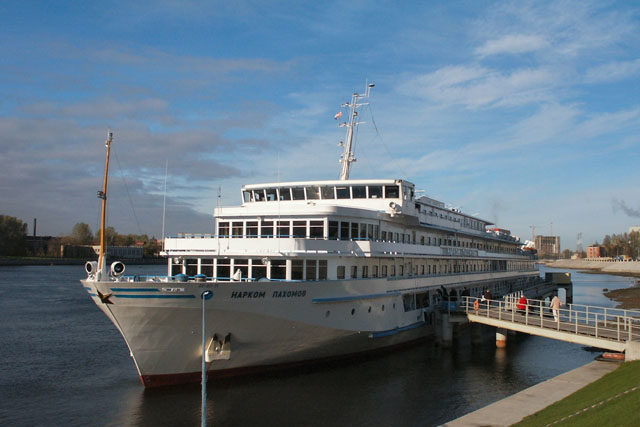 |
Our
home for this trip, including both Moscow and St. Petersburg, was the
M. S. Pakamov. This ship was built in East Germany, so the
emergency signs were all in English and German, not English and Russian. I don't think we had the smallest possible cabin, but I am not quite clear about how much smaller a cabin could have been. The bathroom was a bit amazing, because the shower and sink shared the same spigot, but the shower had a floor drain. |
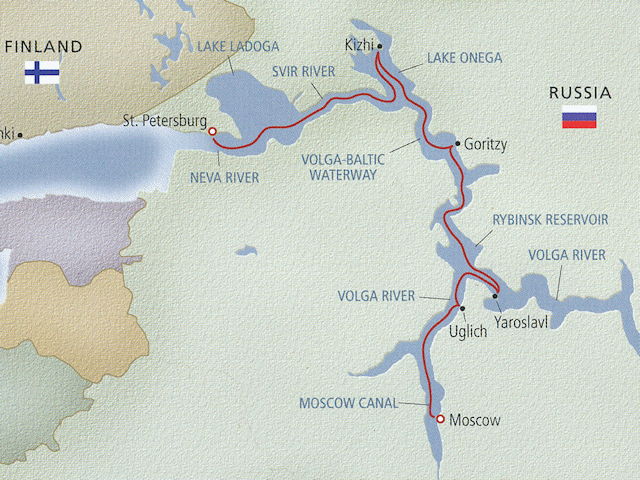 | This
was our route. They called it "The Route of the Czars," but the
water route between Moscow and St. Petersburg was completed by
Stalin. The Czars had to go by land, or portage, or something. In the trip from Moscow to St. Petersburg, we went through 17 locks, mostly at night. |
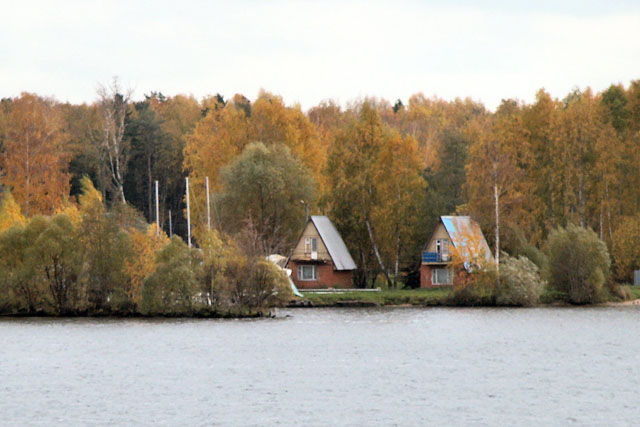 | These
are dachas along the Volga. It appears that dachas are the normal
summer escape for a wide spectrum of Russian people.
Actually, these are relatively small as the dachas go. |
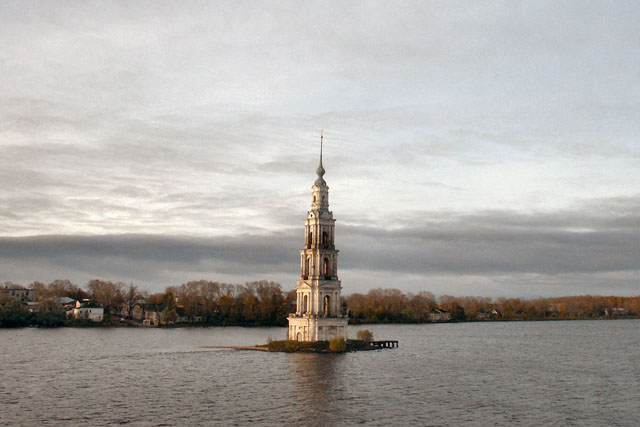 | As
a part of Stalin's waterway project, vast areas were flooded.
Further this flooding was done without much preparation. There
used to be a village surrounding this spire of the Church of Kalyazin
in the Uglich Reservoir. We assume that the people were moved
out, but in Russia you might wonder. |
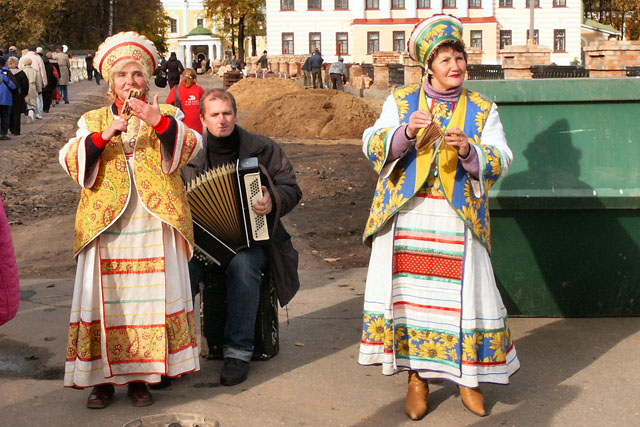 | We
were welcomed to Uglich with music! Uglich is an old town, dating
back to the 12th century, for sure. Oral tradition takes it back
to the 10th century. |
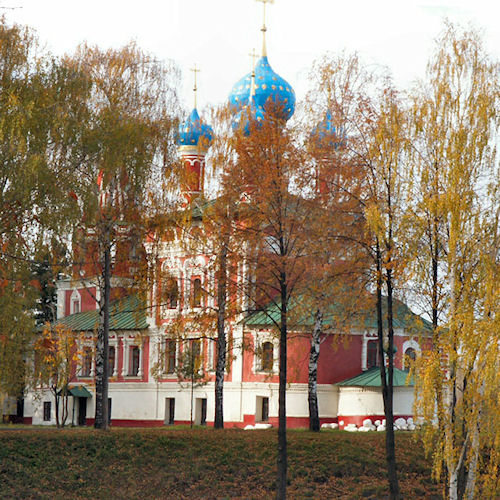 |
The town is simply littered with churches and monasteries. The is the Church of the Nativity of St. John the Baptist. |
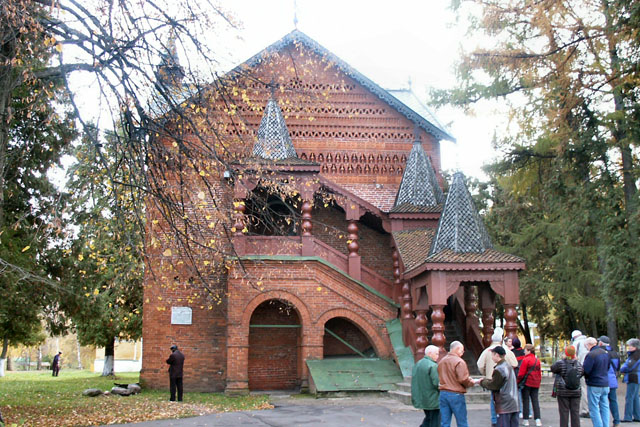 | The
Palace of the Prince dates to 1481, and it was here that the youngest
son of Ivan the Terrible, Dmitry, was sent for safe keeping at the age
of 3. At the age of 10, someone slit his throat, and that was the
end of the Rurik dynasty in Russia. That was in 1591. The
next czar was Boris Godunov, Ivan's advisor, and the investigators said
it wasn't his fault. |
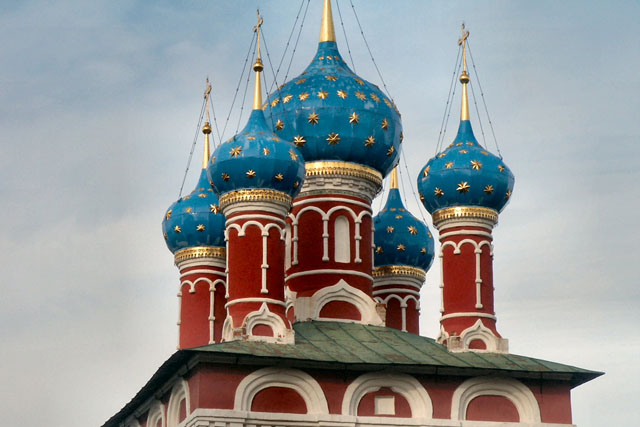
| More
or less on the site of Dmitry's assassination, this tiny church, the
Church of St. Demetrios on the Blood, was erected in 1690. The
Romanov's made sure that the murdered child was canonized, and they
turned Uglich into a pilgrimage destination. |
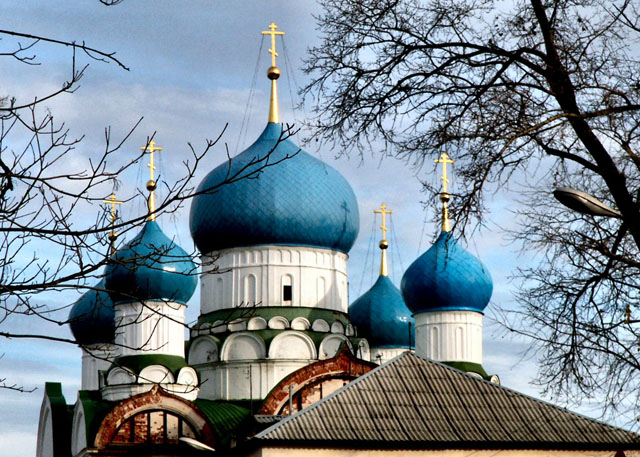 | These are the domes of the Uleima Monastery. This building is very much in the process of restoration. Lower down, the bare and crumbling brick shows how bad things went for religious institutions during the Stalin era. |
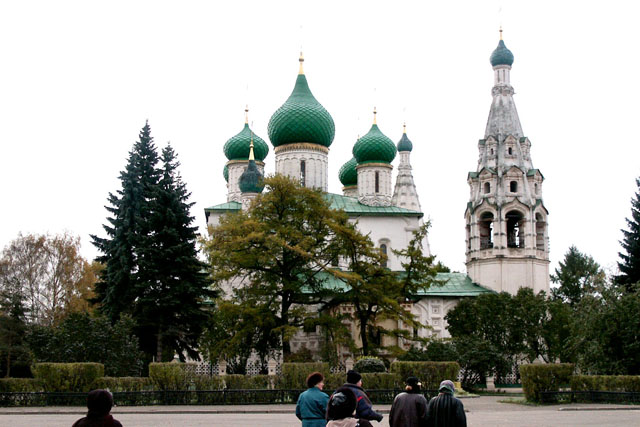 | The
next stop after Uglich was Yaroslavl. This is the Church of
Elijah the Prophet in Yaroslavl. We had a serenade here, and we
were amazed by how small the chapels are. |
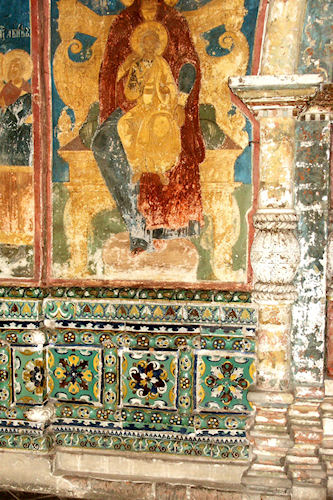 | This combination of fresco and mosaic was in the foyer of Elijah the Prophet. |
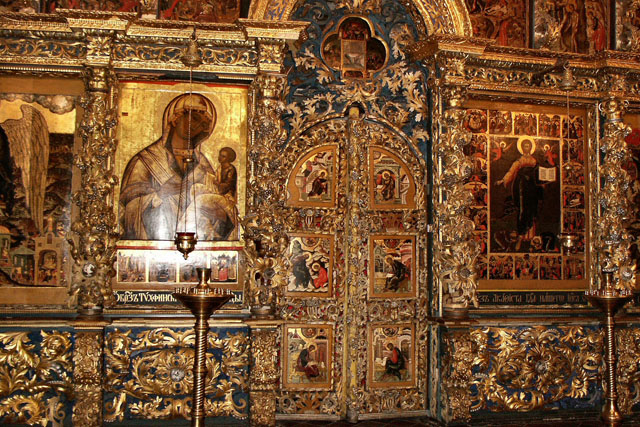 |
This is the iconostasis in the winter chapel. |
| Directly
across from the Elijah the Prophet, we have the Yaroslavl Municipal
building. This architecture dates from the 30's. Yaroslavl
had a couple of good eras. One was in the 17th century, when it
was the de facto capital of Russia, because Moscow was occupied by the
Poles. During the Stalin era, the industrial capability of the
town was built up significantly, and it remains an important
manufacturing center. |
|
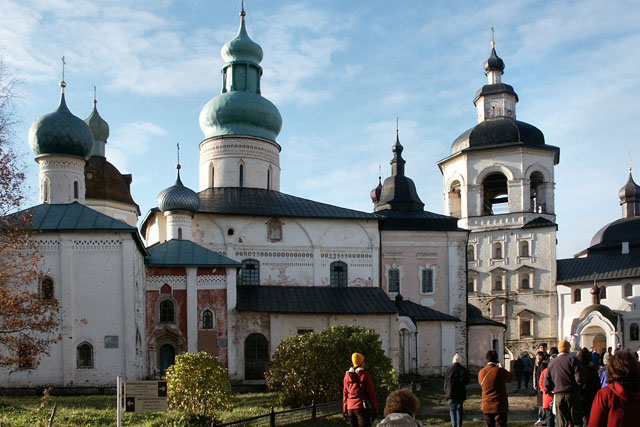 |
Part
of the Monastery of the Resurrection in Goritzy. This 16th
century complex has played a lot of roles. When it was used as a
prison, two of Ivan the Terrible's wives were exiled here.
Other noble prisoners spent time here. It was also used as a
fortress, and the outer walls are set up as battlements. And it
is also a monastery. |
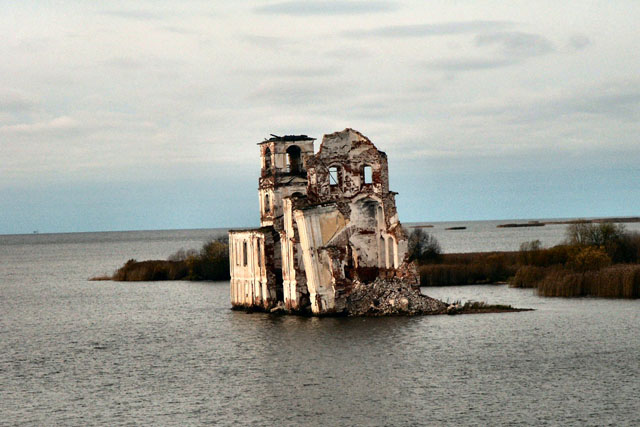 |
The
Rybinsk Reservoir, completed in 1941, is another case of precipitous
flooding. This reservoir marks the northern extreme of the Volga
river and the southern limit of the Volga-Baltic Waterway. This
structure is all that is left of the Leushino Monastery. The fact that the ground was not really cleared means that the rotting wood on the bottom consumes all the oxygen from the water, making this a truly dead body of water. |
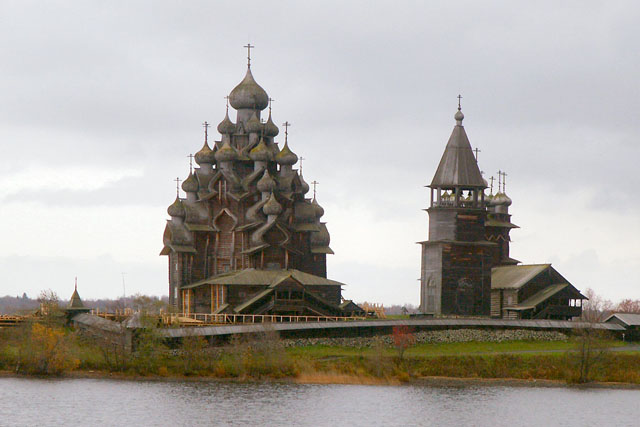 |
We
are approaching Kizhi Island, near the north end of Lake Onega.
This view shows the Church of the Transfiguration, the Bell Tower and
the Intercession Church. The large church is a "summer" church,
and the small church is a "winter" church. Winter is serious here. This island is about 320 miles away from the Arctic Circle. |
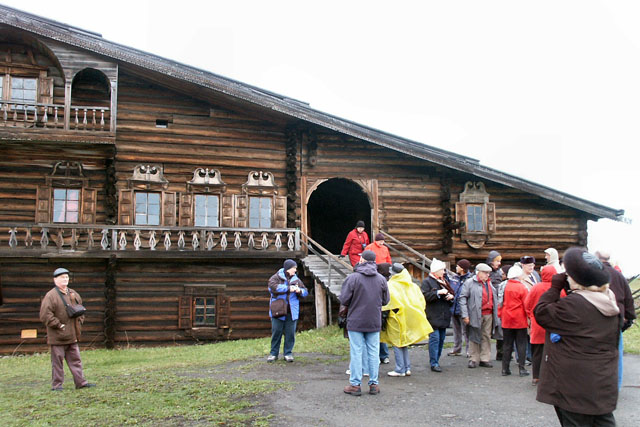 |
The whole of Kizhi Island is an outdoor museum of wooden architecture. This means that the entire island is a non-smoking zone. This is a farm house, which seemed very spacious for a log structure. Of course, it is occupied by both man and beast in the winter. |
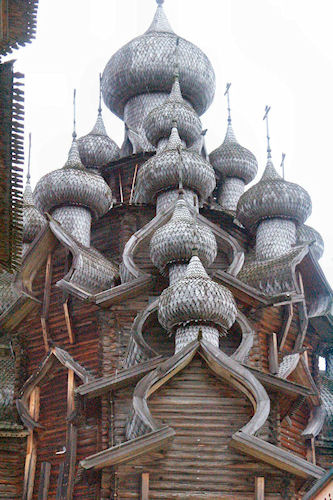 |
The
centerpiece of Kizhi Island is the Church of the Transfiguration.
It was built entirely of wood, without nails, in 1714. We
couldn't go inside because it is in the midst of a massive restoration
project, which is supposed to be done for the 300th anniversary of the
church in 2014. This church has 22 domes, and it is about 100 feet tall. That makes it one of the tallest log structures in the world. |
| Back to Home |
Back to Moscow | Forward to St. Petersburg |
Back to Top |